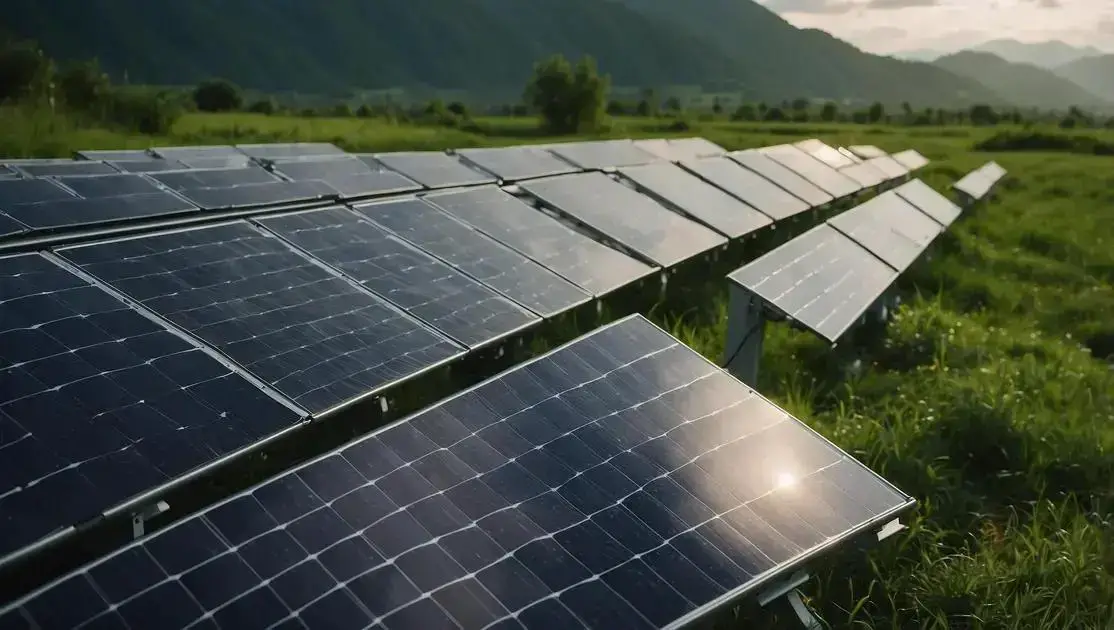Survival Kit is a crucial tool for anyone who loves adventure and the great outdoors. Knowing how to prepare can make the difference between safety and danger. Whether you’re hiking, camping, or exploring unknown terrains, having a well-thought-out Survival Kit ensures you’re ready for anything. In this article, we’ll explore the essential items to include, tips for customization, and common mistakes to avoid to keep you fully prepared for your next expedition.
Table of Contents
ToggleWhat is a Survival Kit?
A Survival Kit is a collection of essential supplies and tools designed to provide support and aid in emergency situations. It is crucial for anyone who may face unexpected challenges, such as natural disasters, power outages, or outdoor adventures. A well-thought-out Survival Kit can make a significant difference in ensuring safety and preparedness.
Purpose of a Survival Kit
The primary purpose of a Survival Kit is to equip individuals with the necessary items to survive in a variety of situations. Whether you’re caught in a solar storm, hiking in the wilderness, or experiencing an emergency at home, having a Survival Kit can provide peace of mind and essential resources.
Key Elements
A good Survival Kit typically includes items such as water, food, first aid supplies, navigation tools, and other equipment tailored to specific needs. Understanding what to include in your kit is crucial, as it ensures you are prepared for any scenario.
Importance of Understanding Your Environment
It’s essential to consider the environment you may find yourself in. A Survival Kit for an urban setting will differ from one meant for outdoor use. Tailoring your supplies based on geography and anticipated challenges is vital for effective preparedness.
Staying Prepared
Adopting a proactive approach to your Survival Kit helps ensure that you remain ready for any unexpected events. Regularly reviewing and updating your kit is necessary to accommodate changing needs and circumstances.
Essential Items for Your Survival Kit
When creating a Survival Kit, it’s important to include essential items that can help you during emergencies or unexpected events. Here’s a list of vital components that every Survival Kit should contain:
1. Water
Having enough water is crucial. Aim for at least one gallon per person per day for at least three days. Pack water purification tablets or filters to ensure safety.
2. Non-perishable Food
Include energy-dense foods such as granola bars, dried fruits, nuts, and ready-to-eat meals. Aim for foods that require no cooking and have a long shelf life.
3. First Aid Kit
A well-stocked First Aid Kit should contain bandages, antiseptic wipes, gauze, adhesive tape, and necessary medications. Don’t forget supplies for specific health needs.
4. Flashlight and Extra Batteries
A reliable flashlight helps you navigate in the dark. Make sure to include extra batteries so you can maintain light during extended outages.
5. Multi-tool or Swiss Army Knife
This versatile tool can help with various tasks, from opening cans to making repairs. Choose a model that includes knives, scissors, and screwdrivers.
6. Emergency Blankets
Compact and lightweight, emergency blankets retain body heat and can be life-saving during cold weather situations.
7. Whistle
A whistle can help attract attention if you are lost. It is a simple way to signal for help without using too much energy.
8. Local Maps
Printed maps are essential for navigation. GPS devices may not work in all situations, so having a physical map ensures you can find your way.
9. Personal Identification
Keep copies of essential documents like ID, insurance policies, and emergency contact numbers in a waterproof bag. This information will be vital during emergencies.
By including these essential items in your Survival Kit, you can enhance your readiness for a variety of unforeseen circumstances.
How to Pack Your Survival Kit
Packing your Survival Kit efficiently is key to ensuring that you have everything you need in an emergency. Here are important steps to follow for packing your kit:
1. Choose the Right Container
Select a durable, waterproof backpack or container that is easy to carry. The right size will allow you to organize your items without overloading.
2. Organize by Category
Group similar items together to find them quickly. Create categories such as food, water, first aid, and tools to keep your kit organized.
3. Place Heavy Items at the Bottom
Store heavier items, like water bottles or canned food, at the bottom of your bag. This will help maintain balance and make your kit easier to carry.
4. Use Pouches or Ziplock Bags
Utilize small pouches or Ziplock bags to separate items within each category. This prevents everything from getting tangled and allows you to grab items quickly.
5. Include Quick-Access Items
Store frequently used items, like a flashlight or first aid kit, at the top or in outer pockets for easy access. In an emergency, you may need these items immediately.
6. Keep Items Lightweight
Be mindful of the weight of your survival kit. Choose lightweight options when possible, such as dehydrated foods and compact equipment, to make carrying easier.
7. Check Expiration Dates
Review expiration dates on food and medications regularly. Replace expired items to keep your kit functional and safe.
8. Customize for Your Needs
Personalize your Survival Kit based on your unique situation. Consider including any additional personal items you may need, such as medications or baby supplies.
9. Reassess Regularly
Every few months, revisit your kit and reassess what you have. Repack and update your supplies based on changing needs or items that may have been consumed or expired.
Following these steps will help you create a well-organized and functional Survival Kit ready for any challenge.
Tips for Customizing Your Survival Kit
Customizing your Survival Kit is important to ensure it meets your unique needs. Here are some tips to help you tailor your kit effectively:
1. Assess Your Environment
Consider your location and the types of emergencies that may arise in your area. Factors like weather, landscape, and local hazards should influence what you pack.
2. Think About Your Lifestyle
Your daily activities play a significant role in what should be in your kit. If you spend a lot of time outdoors, include items specific to camping or hiking, such as maps or extra gear.
3. Include Personal Medications
If you have any ongoing health conditions, be sure to add a supply of personal medications to your Survival Kit. This includes prescriptions, allergy medications, and even over-the-counter remedies.
4. Consider Skills and Knowledge
Your knowledge and skills can dictate what tools are beneficial. If you are skilled in using certain equipment, make sure to include those tools in your kit.
5. Adapt Seasonal Needs
Seasonal changes can require different items. In winter, add snow shovels and thermal blankets; during summer, consider sunblock and insect repellent.
6. Family Needs
Account for the needs of your family members. If you have kids, pack age-appropriate snacks, toys, or comfort items. Also, include supplies for pets if they are part of your family.
7. Portable and Lightweight Design
Make sure your customized kit is easy to carry. Opt for lightweight materials and pack only what you truly need, as excess weight can be cumbersome during an emergency.
8. Regularly Update Your Kit
Your needs may change over time, so it’s essential to review and update your kit regularly. Check for expired items and adjust contents based on any new family dynamics or lifestyle changes.
9. Practice Using Your Kit
Familiarize yourself with the items in your Survival Kit. Practice using tools and make sure all family members know how to access and utilize the kit in an emergency.
By following these tips, you can create a personalized Survival Kit that not only meets your needs but also enhances your readiness for any situation.
Survival Kit for Different Environments
When preparing a Survival Kit, it is crucial to tailor it for different environments. Each setting presents unique challenges that may require specific supplies. Below are tips for adapting your kit based on various environments:
1. Urban Survival Kit
In cities, your kit should focus on items that sustain you during power outages or natural disasters. Include a portable phone charger, portable water filter, non-perishable food, and a first aid kit. A whistle and a flashlight are also key for signaling and navigation.
2. Wilderness Survival Kit
For camping or hiking, prioritize gear that aids outdoor survival. Essential items include a multi-tool, cooking equipment, fire-starting supplies, and a warm sleeping bag. Include a map and compass, along with extra food and water purification methods.
3. Desert Environment Kit
If you’re in a desert area, hydration is vital. Pack additional water bottles, electrolyte tablets, sunblock, and a wide-brimmed hat to stay protected from the sun. Light, breathable clothing is important, as temperature can fluctuate drastically.
4. Cold Weather Survival Kit
For cold environments, focus on warmth and shelter. Include thermal blankets, insulated gloves, a hand warmer, and a sturdy waterproof tarp. Non-perishable food with high energy content will help sustain you in freezing temperatures.
5. Flood-Prone Area Kit
If you live in a flood zone, make sure to include waterproof bags for documents and supplies. Add a life vest, waterproof flashlight, and a marine radio to stay informed about weather conditions. Also, ensure that your food and water supplies are also in waterproof containers.
6. Coastal Survival Kit
Living near the coast requires specific gear, especially for potential hurricanes. Pack a battery-operated radio, extra batteries, and high-energy food sources. Have a plan for evacuation and keep emergency contacts readily accessible.
7. Road Travel Survival Kit
If you spend a lot of time traveling, keep a kit in your vehicle. Include jumper cables, a spare tire kit, basic tools, and snacks. A first aid kit and water bottles are also must-haves for any road adventures.
8. Community Emergency Kit
Consider packing supplies to assist neighbors during community emergencies. This could include extra first aid supplies, blankets, and food to share. Teaming up with others can enhance preparedness in your neighborhood.
By customizing your Survival Kit based on environmental factors, you can better prepare for potential challenges and ensure your readiness for any situation.
Emergency Preparedness with Survival Kits
Emergency preparedness is crucial for ensuring safety during unforeseen events. Having a Survival Kit can make a significant difference in your readiness. Here are important aspects to consider for enhancing your preparedness with Survival Kits:
1. Assessing Risks
Start by identifying the specific risks in your area. This can include natural disasters like hurricanes, earthquakes, or even man-made emergencies. Knowing these risks allows you to tailor your kit effectively.
2. Creating an Emergency Plan
Document a clear emergency plan that includes escape routes, meeting points, and communication strategies. Share this plan with family members and ensure everyone understands their role.
3. Regularly Updating Your Kit
Check your Survival Kit periodically to replenish supplies and remove expired items. Regular updates ensure you have fresh food, water, and medical supplies readily available.
4. Training and Practice
Practice using the items in your Survival Kit so that everyone knows how to use them in an emergency. This can include first aid skills or how to set up temporary shelter.
5. Communication Tools
Include essential communication tools in your kit, such as a battery-operated radio and backup chargers. Staying informed about emergency updates is vital during a disaster.
6. Community Involvement
Engage with your community to learn about local emergency resources and training sessions. Being part of local preparedness programs can enhance your knowledge and readiness.
7. Personalize Your Kit
Customize your kit for your family’s specific needs, such as including medications, baby supplies, or pet food. Personalization increases the effectiveness of your emergency readiness.
8. Educating Others
Share information about emergency preparedness with friends and family. Educating others helps create a more resilient community ready to handle emergencies.
9. Document Storage
Store important documents in a waterproof container within your Survival Kit. This should include IDs, insurance papers, and medical records. These documents are essential during emergencies.
By focusing on emergency preparedness with a well-equipped Survival Kit, you create a safer environment for yourself and your loved ones in times of crisis.
Survival Kits for Outdoor Adventures
When heading out for outdoor adventures, having a well-prepared Survival Kit is essential for ensuring safety and enjoyment. Here are the key components to include in your kit:
1. Water Supply
A portable water filter or purification tablets is vital for providing safe drinking water. Always carry enough water bottles or hydration packs to stay hydrated on your adventure.
2. Food Rations
Pack lightweight, high-calorie snacks such as energy bars, dried fruits, and nuts. These will provide quick energy boosts and are easy to carry in your backpack.
3. First Aid Kit
An outdoor first aid kit should contain bandages, antiseptic wipes, pain relievers, and any personal medications. Be prepared for minor injuries or illnesses that may occur during your adventure.
4. Navigation Tools
Include a compass and a map of the area you are exploring. A GPS device or smartphone with navigation apps can also be useful, but always have a backup in case of battery failure.
5. Fire-Starting Tools
Pack waterproof matches, a lighter, or fire starter cubes to help you easily start a fire for warmth and cooking. Having the ability to create fire is crucial for survival.
6. Shelter Supplies
A lightweight emergency blanket or a compact tarp can provide shelter from the elements. They are easy to pack and can help keep you dry and warm.
7. Multi-tool or Knife
A multi-tool or sturdy knife is versatile for many outdoor tasks, from preparing food to cutting rope. Ensure it is durable and easy to handle.
8. Clothing and Safety Gear
Dress in layers and include an extra layer in your kit. Items like a poncho, hat, gloves, or sunblock are essential for protecting against different weather conditions.
9. Signaling Devices
Include a whistle and a mirror for signaling for help. These lightweight items can attract attention without requiring much effort.
10. Emergency Communication
A portable charger and a backup power bank can keep your phone charged. Staying connected is vital for safety, especially in remote areas.
By packing these essentials in your Survival Kit, you can ensure that you are ready for any challenges that may arise during your outdoor adventures.
Common Mistakes When Assembling a Survival Kit
When assembling a Survival Kit, it’s important to avoid common mistakes that could jeopardize your safety. Here are some pitfalls to watch out for:
1. Not Customizing the Kit
One major mistake is ignoring individual needs. A Survival Kit should cater to your specific circumstances, including personal health needs, family situations, and local hazards.
2. Forgetting to Include Water
Water is essential for survival, yet many people overlook it. Always include enough water for at least three days. Consider adding purification tablets as well.
3. Packing Expired Items
Regularly check the expiration dates on food and medical supplies in your kit. Expired items can jeopardize your health when you need them most.
4. Not Having a First Aid Kit
Failing to include a comprehensive first aid kit is a serious oversight. In emergencies, having basic medical supplies can be lifesaving.
5. Overpacking or Underpacking
Striking a balance between too much and too little is crucial. Overpacking can make your kit cumbersome, while underpacking leaves you vulnerable.
6. Ignoring Seasonal Changes
Outdoor conditions change with the seasons. Ensure your kit includes seasonal items, like sunscreen in summer or thermal blankets in winter.
7. Not Practicing with Your Kit
Many people forget to practice using the items in their kits. Familiarity with tools and supplies is essential so you can act quickly in an emergency.
8. Failing to Include Signaling Devices
Many overlook the importance of signaling devices. A whistle, mirror, or bright colored clothing can help rescuers locate you during an emergency.
9. Disregarding Weight and Portability
Your kit should be lightweight for portability. Consider this when selecting items, as you will need to carry it in case of evacuation.
10. Lack of Maintenance and Updates
Lastly, neglecting to maintain and update your Survival Kit can lead to a situation where you’re not prepared. Regularly check and restock items to ensure readiness.
By avoiding these common mistakes, you can create a functional and effective Survival Kit that meets your needs in emergencies.
Maintaining and Updating Your Survival Kit
Maintaining and updating your Survival Kit ensures that it’s always ready for use in emergencies. Here are effective strategies to keep it in top condition:
1. Regular Inspections
Check your kit at least twice a year. Look for expired food and medicines, damaged items, or supplies that may have been used. Replace anything that is not in good condition.
2. Update for Seasonal Changes
As seasons change, update your kit accordingly. For example, include sunscreen and insect repellent for summer, and thermal blankets or extra layers for winter.
3. Review Personal Needs
Consider changes in personal needs, like new medications or allergies. Make adjustments to the kit to meet the requirements of all family members.
4. Pack Smart
Organize the kit so that it’s easy to find what you need. Group similar items together and label compartments if possible. This saves time during an emergency.
5. Test Equipment
Regularly test items like flashlights and radios to ensure they function properly. Replace batteries as needed to avoid failures during an emergency.
6. Keep a Checklist
Maintain a checklist of items in your Survival Kit. This makes it easier to keep track of supplies and quickly identify what needs to be replaced.
7. Stay Informed
Follow local emergency management guidelines. This can help you understand any new recommendations for items to include in your kit based on regional risks.
8. Include New Technology
As technology evolves, consider adding new tools to your kit, such as portable power banks or solar chargers, to keep devices powered during emergencies.
9. Educate Family Members
Ensure everyone in your household knows where the kit is stored and how to use its contents. Conduct practice drills to build familiarity and confidence in using the kit.
10. Stay Motivated
Keep your commitment to maintaining your Survival Kit fresh by including it in family discussions about safety. This helps everyone understand its importance and encourages shared responsibility.
By implementing these strategies, you can create a Survival Kit that is effective, up-to-date, and ready when you need it most.
In Conclusion: Be Prepared for Any Situation
Having a well-equipped Survival Kit is essential for anyone looking to stay safe during emergencies, whether at home, outdoors, or during travel. By understanding the importance of preparation and knowing how to customize, maintain, and update your kit, you can ensure you are ready for any unforeseen circumstances.
Each section of this guide highlighted critical aspects, including common mistakes to avoid, essential items to pack, and strategies for maintaining your kit. Remember, your preparedness is not just about having supplies; it’s about being educated, ready, and confident in your ability to handle emergencies.
By adopting these practices, you can create a Survival Kit that meets your individual needs and keeps you and your loved ones safe during challenges. Take action now and be equipped for tomorrow!
FAQ – Frequently Asked Questions about Survival Kits
What is a Survival Kit?
A Survival Kit is a collection of essential supplies and tools designed to help individuals survive unexpected emergencies or disasters.
What items should I include in my Survival Kit?
Essential items include water, non-perishable food, a first aid kit, a multi-tool, fire-starting supplies, and navigation tools.
How often should I update my Survival Kit?
It is recommended to check and update your kit at least twice a year, or more often if you use items or if your needs change.
How do I customize my Survival Kit for my family’s needs?
Consider personal health needs, allergies, and the specific risks in your area when choosing items for your kit.
What are common mistakes people make when assembling a Survival Kit?
Common mistakes include not including enough water, packing expired items, and neglecting to customize the kit for individual needs.
How can I ensure my Survival Kit is portable and easy to carry?
Use a lightweight, durable backpack and organize items efficiently by grouping similar items together to minimize weight.











